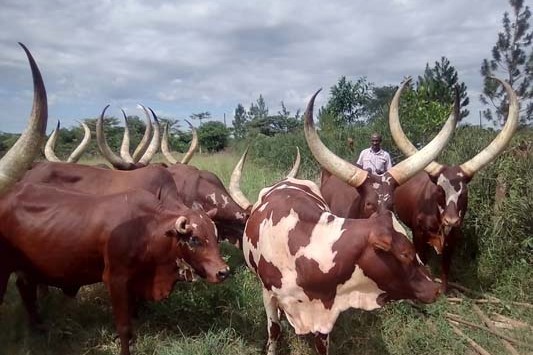By Anne Hardie
Michael Shearer has always been a pasture fanatic, keen to try the latest generation of grasses because theoretically they should be genetically superior to what he has been growing.
He and his wife Cheryl are in an equity partnership with his parents on the 62-hectare dairy farm near Canvastown in Marlborough where they milk about 175 cows once-a-day. Michael was part of Agriseed’s Grass to Gold programme several years ago when he was a sharemilker wanting to learn more about pasture management and he continues to trial new varieties to find out what suits his farming system best.
Since they moved on to the farm they have been annually regrassing between 10% and 25% of the pasture, initially with the tetraploid hybrid ryegrass, Shogun, to get things going and now mixes more targeted to suit their needs.
In autumn he direct-drilled a mix of the diploid perennial ryegrass, Maxsyn, with the tetraploid perennial, Base, to combine the palatability of the tetraploid with the tougher-growing characteristics of the diploid.
‘Sometimes the residuals get a bit low for the tetraploids
and at wetter times of the year it gets a bit trampled and doesn’t
handle that so well – just less plants per square metre.’
He bought them separately and mixed them himself at a rate of 15kg/ha of the diploid and 10kg/ha of the tetraploid with 4kg/ha of white clover. He would like to add red clover as well, but it doesn’t suit their style of grazing on the dairy platform so it only gets added on silage paddocks on the support block.
Maxsyn’s strength is its summer growth due to strong tillering through the season that helps it persist. That suits the Canvastown farm that has K-line irrigation on the flats at the bottom of the farm but then rises up rolling hills to steeper paddocks edging the forestry higher up. Though the farm gets an annual rainfall of two metres or more, it can also get prolonged summer dry periods.
He is a big fan of Base which he considers the best-growing tetraploid as it has the highest tiller density, making it slightly tougher for a tetraploid. Despite that, after three seasons on the Canvastown farm he is beginning to question whether tetraploids suit his style of farming. He doesn’t top pasture and instead takes the residuals down to between 1400 and 1600kg drymatter (DM)/ ha.
“Sometimes the residuals get a bit low for the tetraploids and at wetter times of the year it gets a bit trampled and doesn’t handle that so well – just less plants per square metre.”
It’s a matter of finding out what grasses best suit their farm and farming style, he says. Hence he is still trialling the latest tetraploids to see if there is one that works well in their system. In another paddock he has sown a similar mix this spring of Maxsyn and 4front which is a new tetraploid that is also high yielding with more tillers. That mix replaces the diploid Italian ryegrass, Tabu, which was a short-term pasture direct drilled in the 2020 spring into a paddock of oats that hadn’t worked out well. The oats had been a trial for winter and he ran the harrows over the paddock lightly before sowing Tabu.
Michael usually opts for autumn sowing because there’s fewer bugs and weeds which means less competition for the pasture to get established. This spring he was sowing Forge as a medium-term tetraploid hybrid ryegrass which is aimed at producing a high yield year-round and should have 15-36% more drymatter per year than other hybrids.
He’s trialling that to replace Shogun which struggled in his farm system in a 50:50 Italian perennial mix. Forge is derived from a 25% short term species and 75% perennial which he hopes will make it last longer in his farming system.
It will be direct-drilled into two paddocks to replace Tabu that needs to be replaced after a wet spring. Seed selection is only one part of the pasture equation though. These days, Michael uses NZ Fertiliser which adds micronutrients to the traditional nutrients. Cheryl’s parents had used it on their sheep and beef farm in the past with good results and this is the second year they have applied it to the Canvastown dairy farm. Michael says there was a noticeable difference last year and he found he could drop the nitrogen applications and the pasture still stayed a healthy green. He applies nitrogen separately in liquid form and last year he put on 130kg N/ha.
“Pretty much all our nitrogen is in liquid form so you get a quicker response because it’s already broken down. In the studies there does seem to be less leaching, but it is also lighter applications.”
The first couple of years on the farm he applied 220kg N/ha and says it didn’t grow any more grass. They do feed fewer mouths now though and the herd is tidier, so it’s not a direct comparison.
All up, the farm grows about 12 tonnes DM/ha per year and he would like to get it to 14t with the right mix of grasses, fertiliser and management. Pasture species is just a part of that equation.
“They’re like a race horse – if you want them to perform well, you have to treat them right.”
A few years ago, Michael was a happy man when he went walking with his platemeter to measure pasture, but experience has replaced the platemeter and now he uses it just once in winter when the herd is on rations.
“In winter you need to be a bit more accurate and it’s mainly to check I have my eye in. Once you know your farm and your cows you don’t need the platemeter. And through the season the cows or the vat will tell you if you haven’t got it right.”
Drying off with the right pasture cover and calving at the right pasture cover are the critical times for hitting pasture cover targets and then the focus turns to getting the round lengths right through spring.
“I like a long round length and so it’s never below 25 days. Even at the quickest growth, it still takes seven to eight days for each leaf to grow on a ryegrass plant and it grows three leaves. You don’t want to go past that, but you don’t want to go too early because it grows the most at the three-leaf stage. And I never struggle for quality.
“Another reason for longer round length is it gives you more options. If you’re on a 18-20-day round, you can be in trouble within three to four days, especially in our climate where it can vary so quickly. A longer round length takes out those humps and hollows.”
He sits on a 25-30-day round from mid-September to the end of March – the longest possible without compromising quality.






